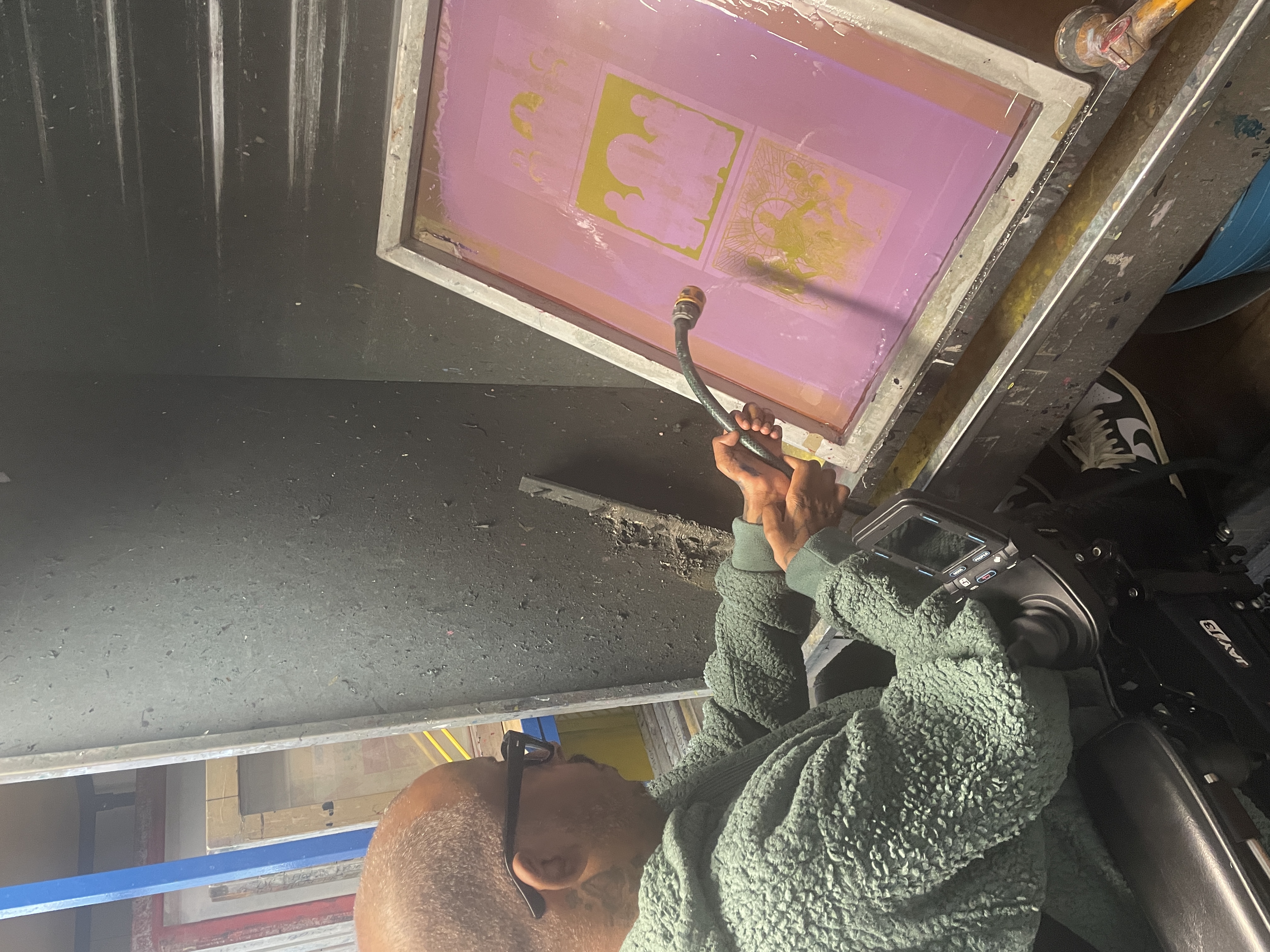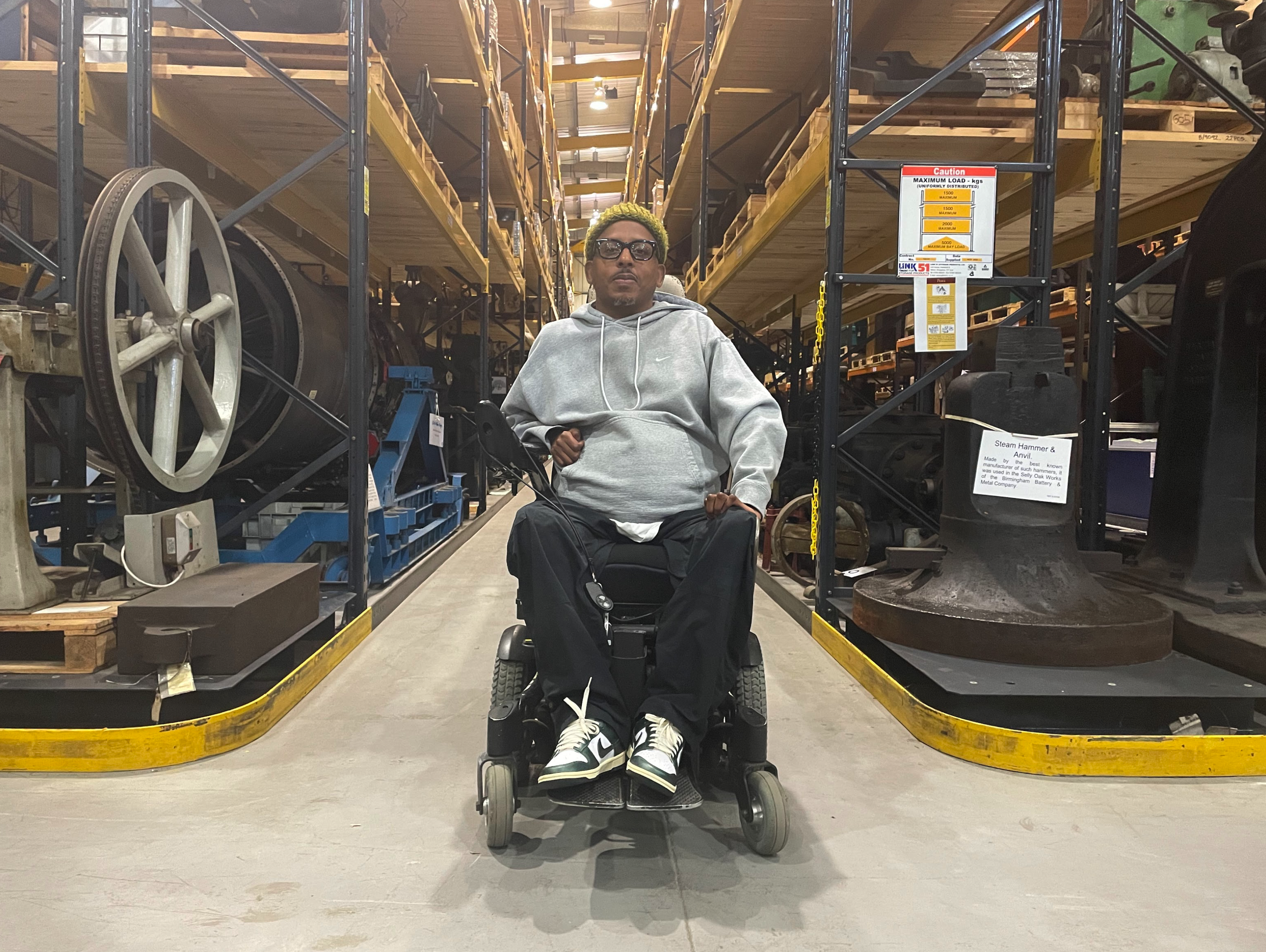
Artist Christopher Samuel at Birmingham Museum Trust Museum Collection Centre
Photo courtesy of the artist Christopher Samuel
My name is Christopher Samuel.
I’m an artist who makes work about disability and identity politics.
As a Black, disabled man from a working class family, I usually find that my history and my story is absent from most museums, galleries and archives.
Nobody to date, it seems, has seen fit to preserve my history. And to be missing from such important and influential collections and spaces is to be invisible.
The opportunity to work with Birmingham MuseumTrust (BMT) as part of the 20/20 program of residencies run by UAL: Decolonising the Arts Institute was the perfect platform for me to address these absences.

Christopher Samuel looking at the oil painting ‘The Healing of the Blind of Jericho’ by Nicolas Poussin (1650)
Photo courtesy of the artist Christopher Samuel
I was initially interested in working with Birmingham Museums Trust because of their collection of objects related to the Windrush generation and histories of colonialism and Caribbean migration, all of which have a direct link to my own family history.
I wanted to research how the lives of black and disabled people migrating into or living in Birmingham have been recorded, catalogued or archived in the existing archive and collection, and what those artefacts say about their real lived experiences.
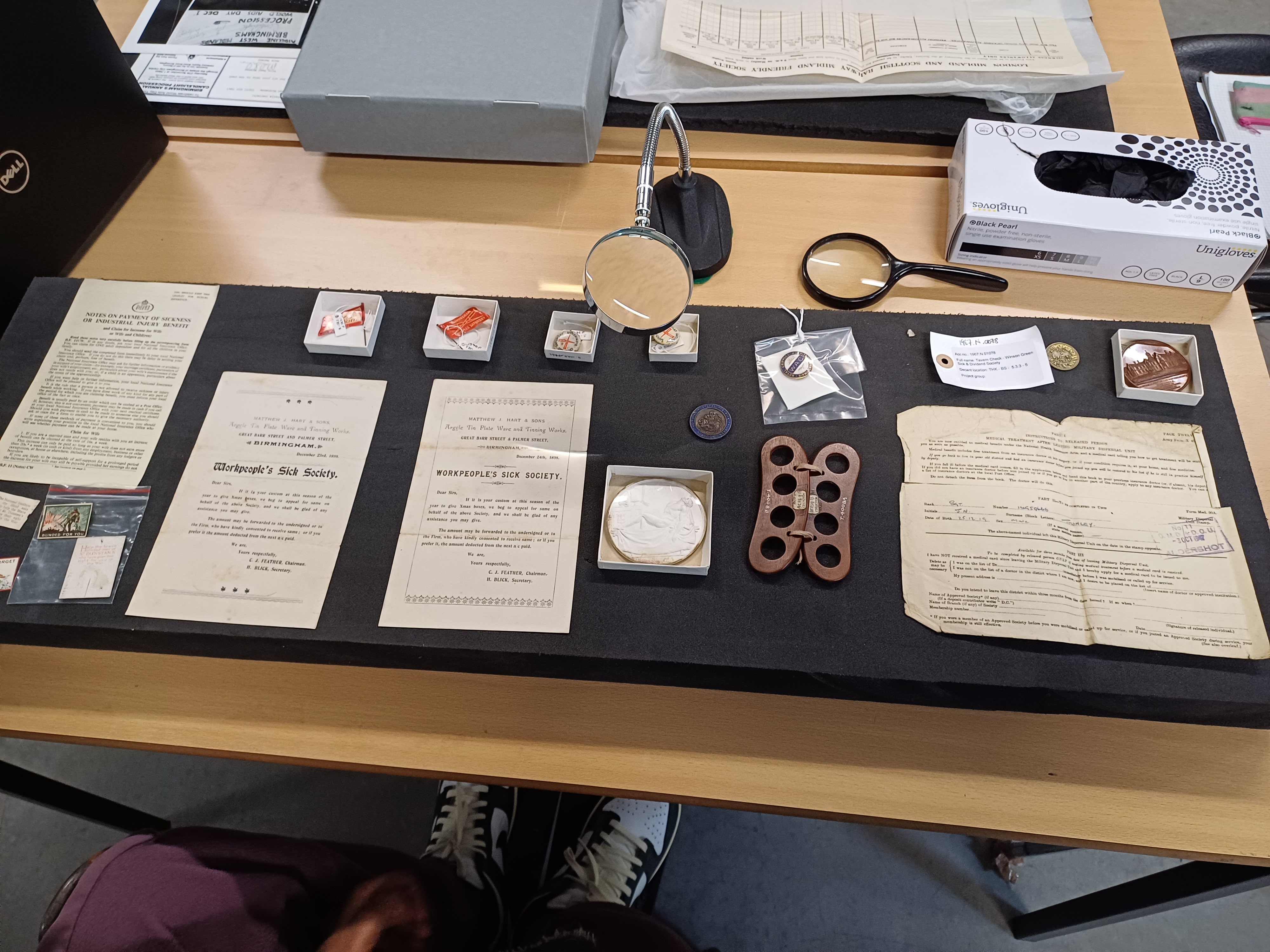
A selection of objects from Birmingham Museum Trust’s Collection
Photo courtesy of the artist Christopher Samuel
As a disabled person, I'm always curious to see how any big organisation or museum or gallery works – and works with me.
Both BMT and 20/20 were amazing from the get go.
Emma McMullen (BMT Collections Access Officer (Loans)) and Victoria Osborne (BMT Senior Curator of Art) have supported me throughout; making sure I had ample amounts of support from other BMT team members in different departments, working with me to identify, locate and understanding different items within their collection and how things are catalogued, finding answers for any questions I might ask – even strange ones!
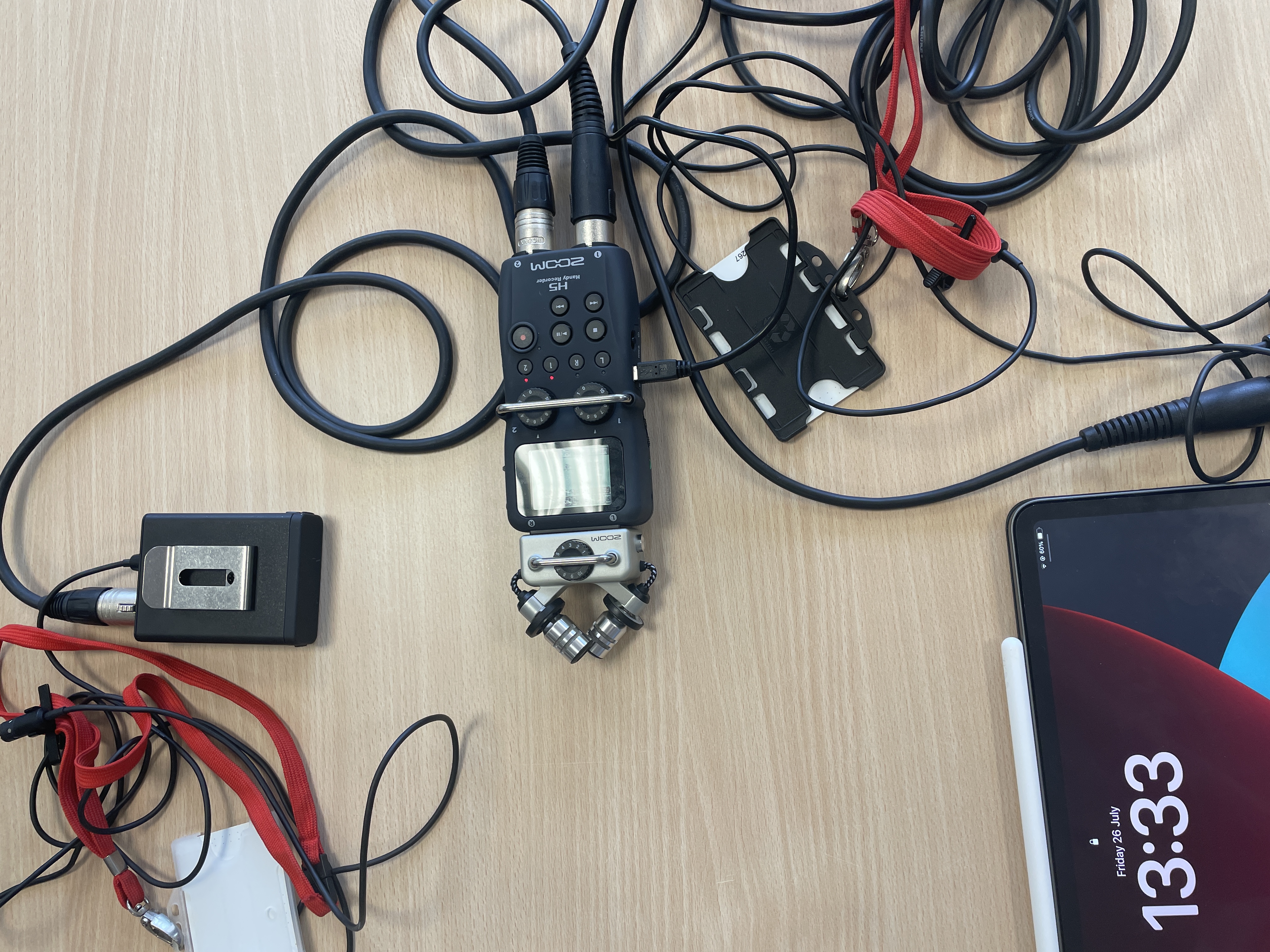
Photo courtesy of the artist Christopher Samuel
BMT’s collection is vast – and overwhelming.
But as I began to explore, I realised quite quickly that there was little to nothing historic relating directly to the lives of disabled black people in and around Birmingham in the current collection – especially not as first hand accounts.
Once again, my story has gone unrecorded.
So that was the driving force for me to use my residency to search for and engage with other people's lived experiences related to the black disabled experience in and around Birmingham.
Photo courtesy of the artist Christopher Samuel
I spoke to dozens of different people within the organisation and outside of it to try and connect with the community. BMT’s Co-CEOs Sara Wajid and Zak Mensah set up events for me to speak with influential members of the Birmingham community.
But making real community connections was challenging in the timescale – especially coming from an organisation which does not already have existing ties with the Black disabled community.
It was a lot of work, and often led to frustrating dead ends.
However, I was eventually able to connect with some amazing disabled people of colour from the local area who were willing to share their stories, and who were open to bringing their experiences into the museum - a brave step when you are breaking new ground somewhere which previously felt not inclusive of your lived experience.
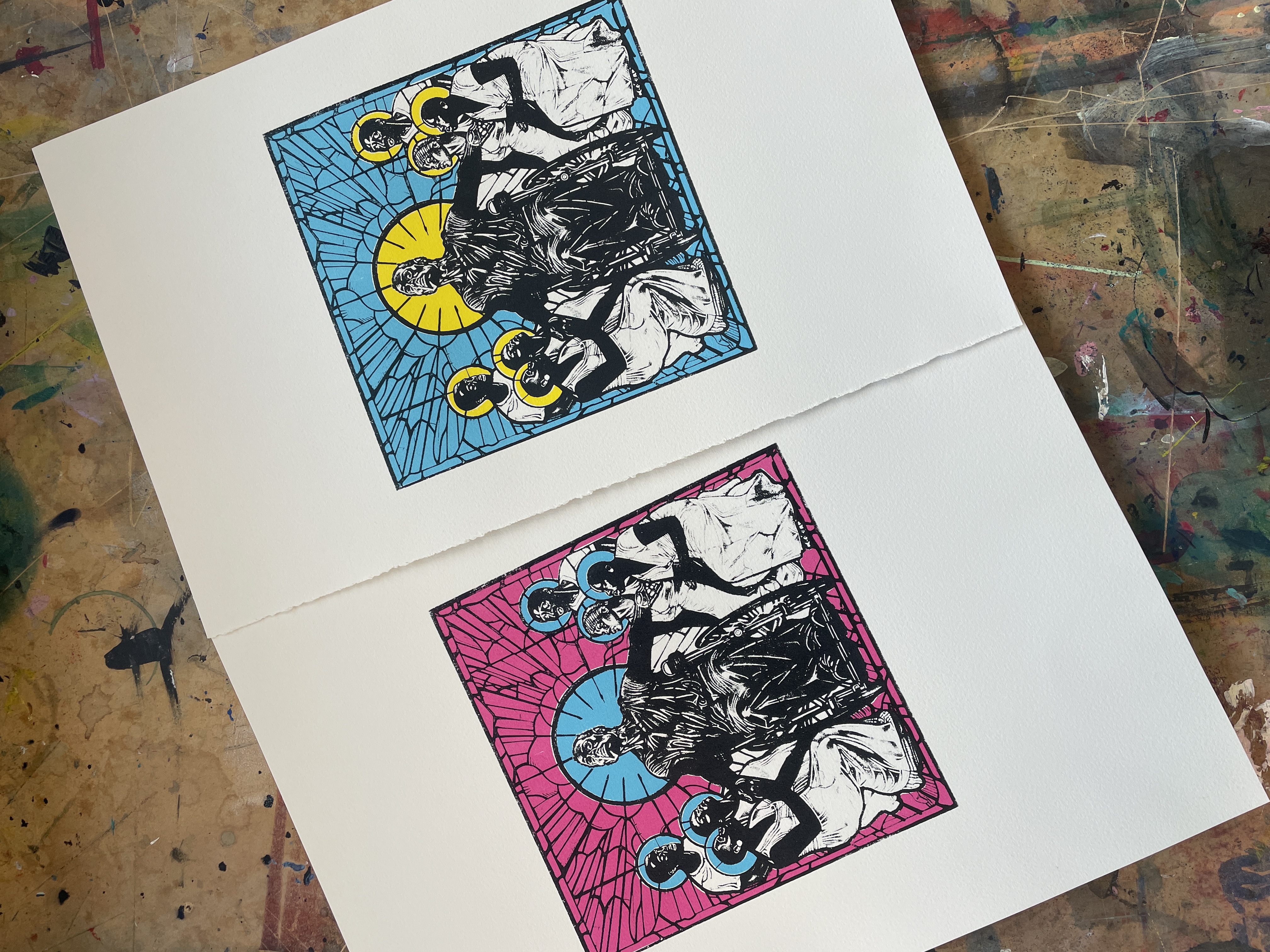
Two screenprints by Christopher Samuel at Art House Print Studio, Wakefield
Photo courtesy of the artist Christopher Samuel
Some of these incredible individuals have helped to address the gaps in the museum’s collection by allowing me to record their oral histories, which will now sit permanently within the collection.
I am working to make new acquisitions of personal photographs and artefacts into the collection to enhance their stories.
And alongside that I have created a number of drawings and prints inspired by their stories. And I am working with Stained Glass artist Claire Orme at Studio Orme to create a stained glass artwork that will be a direct response to the conversations I’ve had and oral histories I’ve been collecting.

Stained Glass samples at Studio Orme
Photo courtesy of the artist Christopher Samuel
I hope the work that I've been doing, and the community connections that I've just started to build, will help to begin a shift in representation of the disabled experience (specifically the local, black disabled experience) being seen in a space and in a way that's never been done before.
I hope visitors will get to see what the disabled black experience is like for those who live in Birmingham, and that the community begins to see that they are not second thought.
The work is a direct statement about how important it is for them to be represented within the museum.
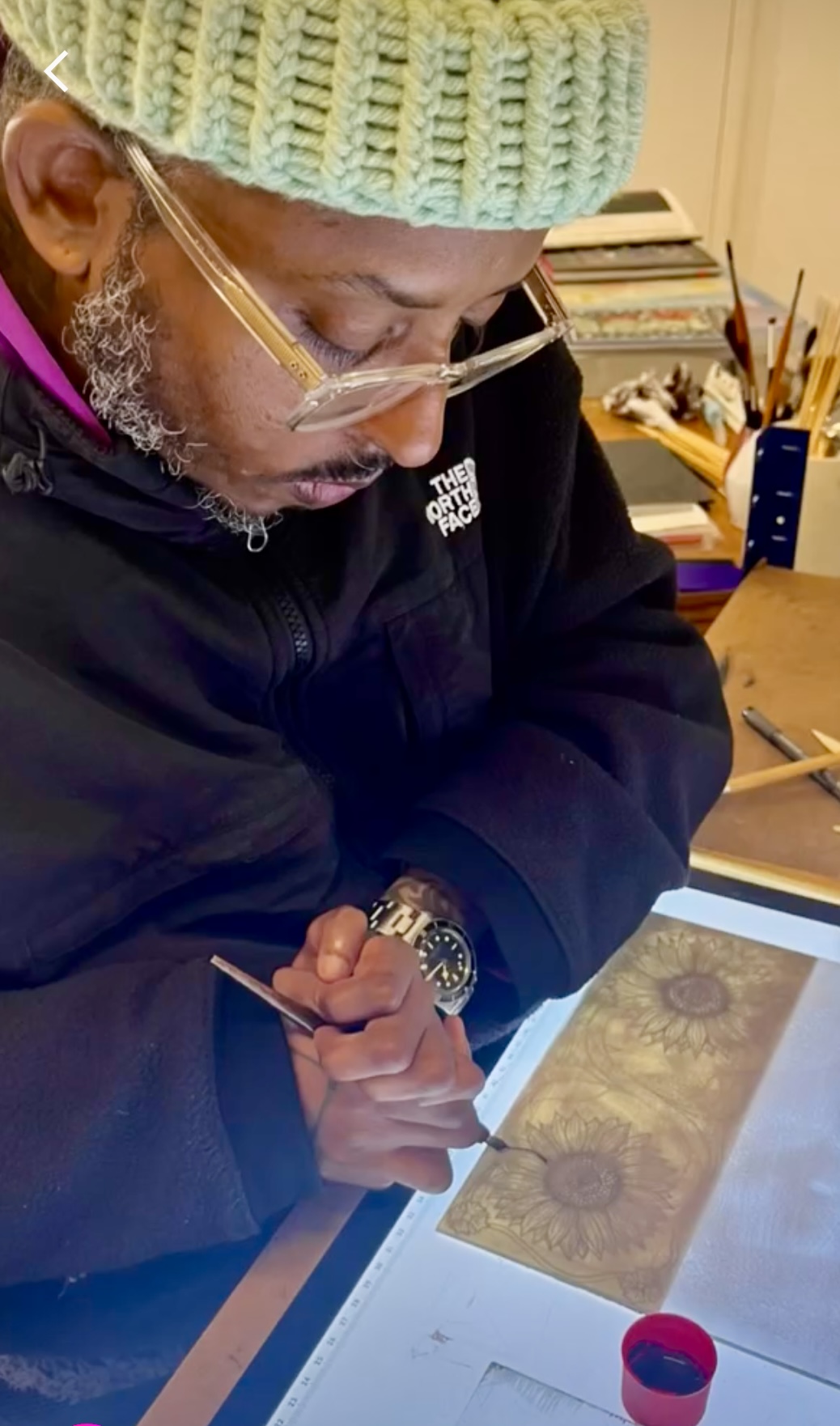
Christopher Samuel working at Studio Orme
Photo courtesy of the artist Christopher Samuel
This project is just part of an amazing change that Birmingham Museums Trust are currently in the process of implementing to become more representative and inclusive of the diverse community they serve.
BMT staff have mentored & supported me and my practice for this residency – enabling me to be more ambitious.
Through them I have made connections with local decision makers who can advocate for the same things I care about – allowing conversations and change to happen.
I know that I’ve only just scratched the surface and I intend to continue to build on the community links I’ve made to create a bigger body of research and work in the years to come.
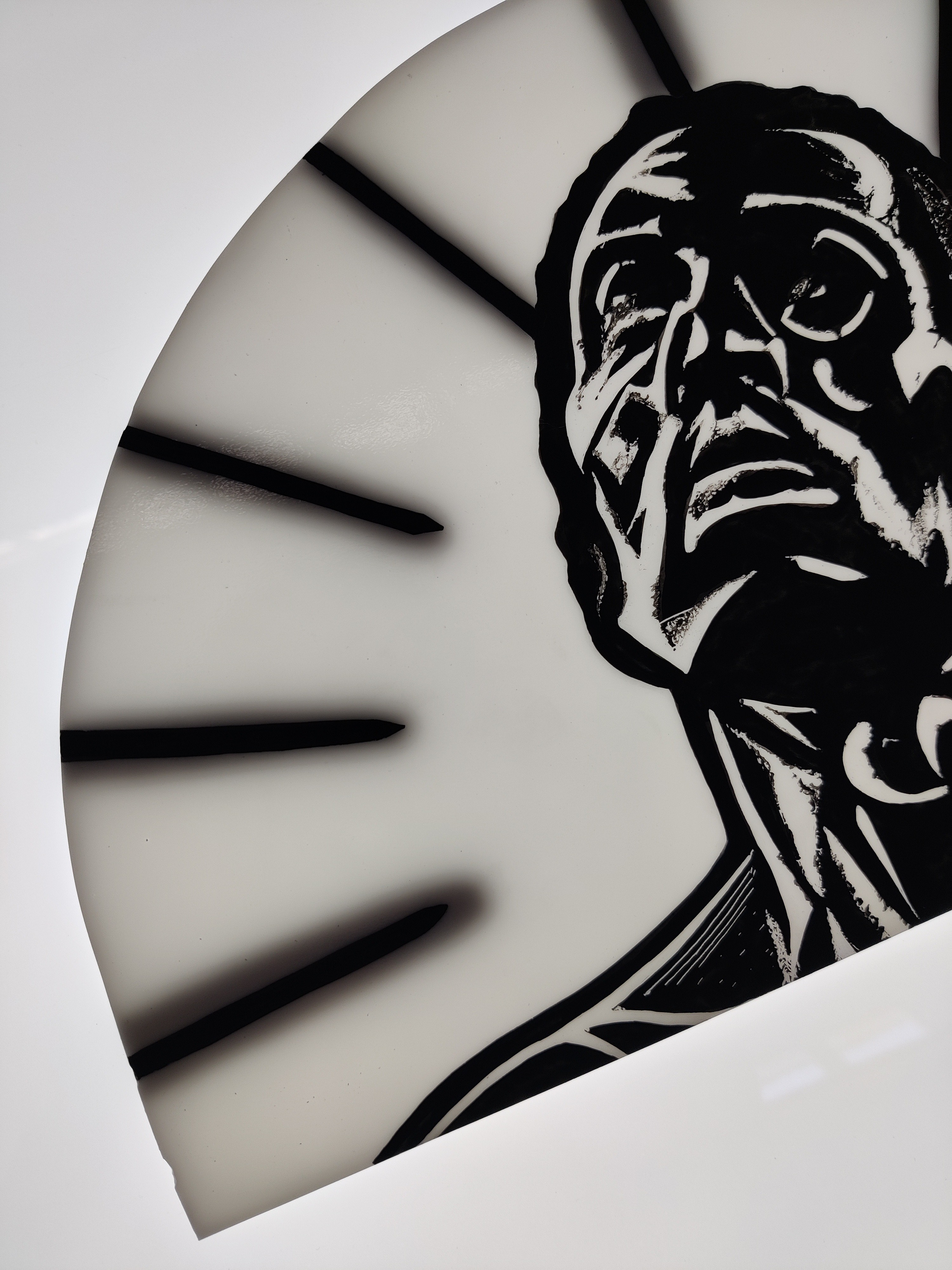
A small sample piece of stained glass produced at Studio Orme by Claire Orme
Photo courtesy of the artist Christopher Samuel
Partner Reflection
Birmingham Museums Trust
Emma McMullen, Collections Access Officer
Victoria Osborne, Senior Curator – Fine Art
Sara Wajid, Co-CEO
September 2024
Christopher Samuel is a leader and an advocate for Black and disabled representation in the arts, making change in the world through socially engaged practice. This aligns with the core vision of Birmingham Museums Trust (BMT) to be a socially purposeful museums service. After being introduced to the city’s collection, Christopher felt it was essential to create a collection of oral histories of Birmingham people who identify as Black and disabled, a group which had previously been unrepresented. As a result, we have nine new oral histories documenting the voices of local people and their experiences. In this way, the residency not only enriches the art collection through Christopher’s commission but contributes enormously to the oral and social history collections in ways that will benefit Birmingham people now and in the future.
Christopher’s project extends beyond the residency and his planned exhibition at Birmingham Museum & Art Gallery in 2025. The relationships Christopher has developed with the city council’s Public Health Division, local universities and other arts organisations offer exciting possibilities for further community engagement, and he is pursuing additional funding to continue the work begun during his residency.
BMT is striving to become a more confidently anti-racist museum. The 20/20 project and Christopher’s work have been another positive source of energy and critical friendship in this work. Since the 20/20 project began, we have helped to devise and enrolled on the Museums Association’s pilot Anti-Racist Museums Programme, along with six other UK museums.
The 20/20 project has informed our thinking around future residencies and how we can better support artists in navigating the institution and its collections. Our aim is to develop a more integrated, participation-led and sustainable residency model that benefits artists, the museum and local communities. Looking ahead, we have also identified opportunities for BMT to work more closely with artists and curators in the city and help to strengthen these local and regional networks.
Working with Christopher has been inspiring and has changed us all as individuals, both professionally and personally. His residency not only highlighted and helped to address crucial gaps in the city’s historical collection relating to people with disabilities, but also raised questions around the physical accessibility of the collections, sites and procedures, including how we catalogue and interpret objects. Without Christopher’s residency, we might not have had the catalyst to investigate and develop these themes and issues further.
The Covid-19 pandemic and its aftermath created many challenges for museums like BMT. Being part of the 20/20 project has provided a vital opportunity to reinvigorate our institutional creative spirit while addressing critical gaps in the city’s collections. Christopher’s presence at BMT has been energising, inspiring us to revisit our collection and curatorial practices. By embedding brilliant artists like Christopher Samuel within the organisation, we are rediscovering the artistic potential of the broad range of the city’s collections and deepening our social impact purpose and commitment to anti-racism.

